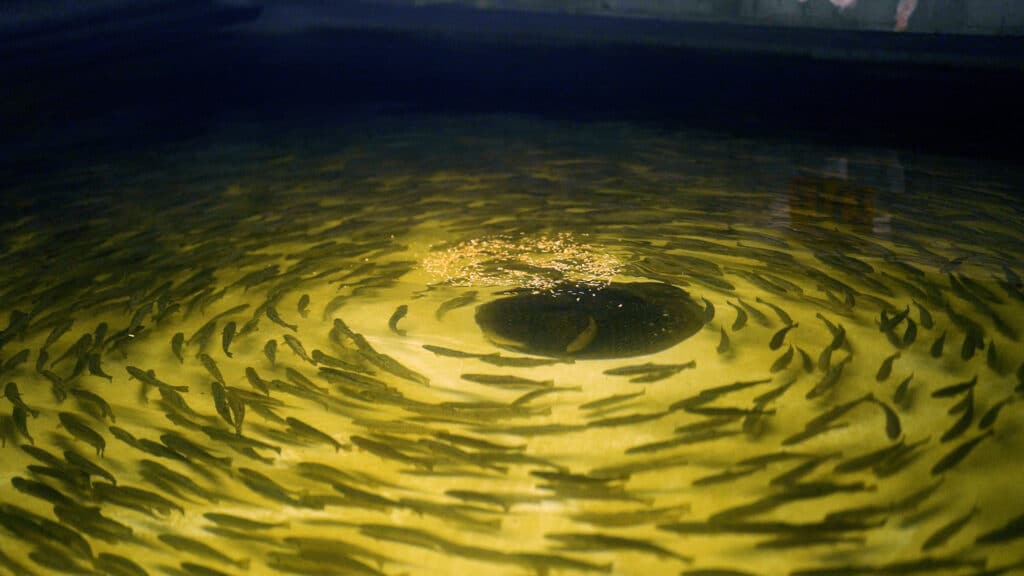At Vattenfall’s compensation hatchery in Heden, tests are now underway to feed trout with larvae as part of their diet. After a hesitant start, the fish have begun to eat – an important step in the project that could lead to more sustainable alternatives to traditional fishmeal.
In Boden’s green transition, future fish feed also plays a role. The project, carried out in collaboration between Axfoundation, SLU, the Municipality of Boden and DC Farming, explores whether larvae raised on local food waste can replace parts of today’s feed. The larvae are cultivated at Boden Plug & Play, where they are fed with vegetables from ICA Supermarket in Boden – surplus produce that would otherwise have been discarded.
– At first the fish were a bit skeptical, but then they started eating. We noticed that livelier larvae triggered the fish even more. Now we even see some individuals practically taking the larvae straight from our hands, says Henri Heimonen, operations manager at the hatchery.
Testing Acceptance
The purpose at this stage is to examine acceptance – will the fish eat the larvae, and how is their behavior affected? At the moment it is trout that are being fed the new diet. Three tanks are given larvae while three others serve as reference. Each day the feed is weighed and any leftovers are frozen for analysis. The fish also undergo regular checks for condition and external status.
Currently, larvae make up around 15 percent of the daily ration. At the Heden hatchery, between 70 and 80 tons of feed are consumed every year. Even a partial substitution could therefore make a difference if the results prove positive.
– We are testing different larval sizes to see what triggers the fish the most. This is just the beginning, but so far the results look promising, says Heimonen.
 The fish that partly receive larvae as food have already started to favor the new diet.
The fish that partly receive larvae as food have already started to favor the new diet.
A Circular Vision
In the bigger picture, the aim is to create a fully circular system. Heimonen envisions a future where fish farming becomes part of a larger cycle.
– Ideally, we could have a whole chain where fish farming, greenhouses and larva production are interconnected. The fish provide nutrients for plants, food waste turns into larvae – and the larvae become food for the fish again. That would be ideal, he says.
Boden as a testbed
For Vattenfall, the project is about both reducing dependence on fishmeal and contributing to sustainable development.
– This is a great initiative that can both ease the pressure on the oceans and create jobs here in Boden. I’m glad we can be part of testing it, and that we in our own way can contribute to the green transition, says Heimonen.
Behind the larva production is DC Farming, a work-integrating social enterprise. Local food waste is used as raw material, while people who are far from the labor market are given opportunities for employment and training.
If larvae can replace a larger share of today’s fishmeal, it would also help reduce pressure on the world’s oceans. Lower demand for so-called forage fish could help counteract overfishing, which today is one of the biggest challenges for marine ecosystems.
The trials will continue throughout the autumn, with results compiled in collaboration with researchers at the Swedish University of Agricultural Sciences. If the positive trends hold, Boden could become a pioneer in developing the sustainable fish feed of the future – where environmental benefits and social value are woven together in the same cycle.